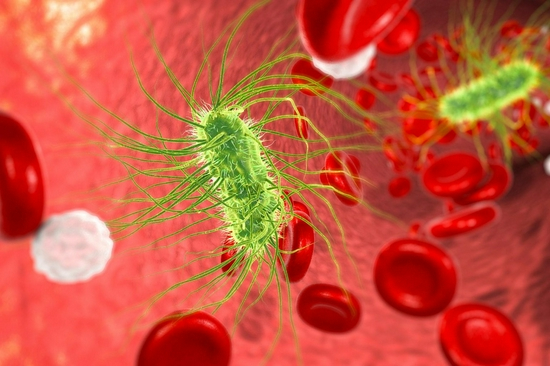想减肥?别太狠,囤点脂肪也是有好处的。一项最新研究揭示了人体免疫细胞是如何利用体内储存的脂肪来对抗感染的。

New Research Reveals How the Body Uses Fat To Fight Infections
New research from the University of East Anglia and Quadram Institute reveals how our immune cells use the body's fat stores to fight infection.
英国东英吉利大学和卡德拉姆研究所的最新研究揭示了人体免疫细胞是如何利用体内储存的脂肪来对抗感染的。
The research, published in the journal Nature Communications, could help develop new approaches to treating people with bacterial infections.
该研究发表在《自然通讯》杂志上,可以帮助开发治疗细菌感染患者的新方法。
The research team say their work could one day help treat infections in vulnerable and older people.
研究小组表示,他们的研究成果有朝一日可能有助于治疗弱势群体和老年人的感染。
The team studied Salmonella -- a bacterial infection which causes diarrhoea, vomiting, abdominal pain, fever and sepsis. The UEA team collaborated with the Quadram Institute and colleagues at the Earlham Institute, to track fatty acid movement and consumption in live stem cells. They went on to analyse the immune response to Salmonella bacterial infection, by analysing liver damage. They uncovered how blood stem cells respond to infection, by acquiring high energy fatty acids from the body's fat stores.
研究小组研究了沙门氏菌,这是一种导致腹泻、呕吐、腹痛、发烧和脓毒症的细菌。东英吉利大学团队与卡德拉姆研究所和厄勒姆研究所的研究人员共同合作,追踪了活干细胞中脂肪酸的运动和消耗。他们通过肝脏损伤情况来分析沙门氏菌细菌感染的免疫反应,揭示了造血干细胞如何通过从体内储存的脂肪中获取高能脂肪酸来应对感染。
The team found that in the bone marrow where blood stem cells are resident, infection signals drive adipocytes to release their fat stores as fatty acids into the blood. And they identified that these high energy fatty acids are then taken up by blood stem cells, effectively feeding the stem cells and enabling them to make millions of Salmonella-fighting white blood cells.
研究小组发现,在造血干细胞所在的骨髓中,感染信号驱动脂肪细胞将储存的脂肪以脂肪酸的形式释放到血液中。这些高能脂肪酸随后被造血干细胞摄取,有效地喂养了干细胞,使它们能够制造数百万抗击沙门氏菌的白细胞。

The researchers also identified the mechanism by which the fatty acids are transferred and discusses the potential impact this new knowledge could have on future treatment of infection.
此外,研究人员还确定了脂肪酸转移的机制,并讨论了这一新成果可能对未来感染治疗产生的潜在影响。
Dr Stuart Rushworth, from UEA's Norwich Medical School, said: "Fighting infection takes a lot of energy and fat stores are huge energy deposits, which provide the fuel for the blood stem cells to power up the immune response.
东英吉利大学诺维奇医学院的斯图尔特·拉什沃思博士说,“对抗感染需要大量能量,而脂肪储存是巨大的能量储备,为造血干细胞增强免疫反应提供燃料。”
"Working out the mechanism through which this 'fuel boost' works gives us new ideas on how to strengthen the bodies fight against infection in the future."
“研究出这种脂肪‘燃料助推器’的工作机制,让我们对未来如何加强身体对抗感染有了新的想法。”

Dr Naiara Beraza, from the Quadram institute, said: "Our results allow us to understand how our immune system uses fat to fuel the response to infection. Defining these mechanisms will enable us to develop new therapeutics to treat infections in the liver."
来自卡德拉姆研究所的奈亚拉·贝拉扎博士表示:“研究结果让我们了解了免疫系统是如何利用脂肪来刺激对感染的反应的。明确这些机制将使我们能够开发治疗肝脏感染的新疗法。
Dr Rushworth said: "In the future, I hope our findings will help improve treatment for vulnerable and older people with infections, by strengthening their immune response.
拉什沃思博士说:“在未来,我希望我们的研究结果能够通过加强他们的免疫反应来帮助改善对易受感染的老年人的治疗。
"With antibiotic resistance being such a present and widespread challenge for society, there is an urgent need to explore novel ways like this to help the body's immune system to fight infection," he added.
拉什沃思补充说:“抗生素耐药性是当今社会面临的一个普遍挑战,迫切需要探索像这样的新方法来帮助人体免疫系统对抗感染。”

